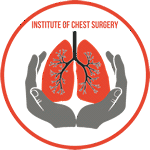Tracheoesophageal Fistula (TEF) is a rare but serious congenital condition that affects the respiratory and digestive systems in newborns. In this article, we will delve into what exactly TEF is, its different types, causes, symptoms, and most importantly, the treatment options available to manage this condition and provide affected infants with a better quality of life.
What is a Tracheoesophageal Fistula (TEF)?
A Tracheoesophageal Fistula is an abnormal connection between the trachea (windpipe) and the esophagus (food pipe). In a normal anatomy, the trachea and esophagus are separate tubes, with the trachea leading to the lungs for breathing, and the esophagus leading to the stomach for digestion. However, in cases of TEF, there is an unnatural connection between these two tubes, leading to complications in feeding and breathing.
Types of Tracheoesophageal Fistula
- Esophageal Atresia with Distal TEF (Type C): This is the most common type of TEF, where the upper part of the esophagus does not connect to the lower part, and a fistula exists between the lower esophagus and trachea.
- Esophageal Atresia with Proximal TEF (Type A): In this type, the upper part of the esophagus connects to the trachea, and there is no fistula between the lower esophagus and trachea.
- Esophageal Atresia without TEF (Type B): This type involves a complete disconnection of the esophagus, with no connection to the trachea.
Causes of Tracheoesophageal Fistula
TEF occurs during fetal development when the esophagus and trachea fail to separate correctly. The exact cause of this abnormality is not always clear, but certain risk factors may increase the likelihood of its occurrence. These risk factors include genetic factors, maternal smoking during pregnancy, and certain medications or drugs taken during pregnancy.
Symptoms of Tracheoesophageal Fistula
The signs of TEF are usually evident soon after birth, and they can vary depending on the type and severity of the fistula. Common symptoms include:
- Excessive drooling
- Inability to swallow or feed properly
- Choking or coughing during feeding
- Cyanosis (bluish discoloration of the skin) due to respiratory distress
- Gastrointestinal issues like vomiting and stomach distension
- Frequent respiratory infections
Diagnosis of Tracheoesophageal Fistula
If TEF is suspected, the medical team will perform a series of tests to confirm the diagnosis. These tests may include:
- X-rays: Imaging tests such as X-rays can help visualize the abnormal connection between the esophagus and trachea.
- Endoscopy: An endoscope is used to examine the esophagus and trachea directly, allowing for a more accurate diagnosis.
- Feeding Trial: A feeding trial may be conducted to assess the infant’s ability to swallow and detect any difficulties.
Treatment of Tracheoesophageal Fistula
TEF requires immediate medical attention and surgical intervention to correct the abnormality and ensure the infant’s well-being. The primary treatment for TEF is surgery, which aims to repair the esophagus and close the fistula.
Surgery for TEF is typically performed in two stages:
- The first stage involves repairing the esophagus and closing the tracheoesophageal fistula.
- The second stage, in the case of Type C TEF, involves connecting the upper and lower segments of the esophagus to establish a continuous path for food to reach the stomach.
During the surgery, the surgeon carefully repositions the trachea and esophagus and sutures the tissues to close the fistula. In some cases, a temporary gastrostomy tube may be placed to provide nutrition until the baby can swallow safely.
After Surgery and Long-Term Outlook
Following the surgery, the baby will require intensive medical care and monitoring to ensure a smooth recovery. Feeding and breathing difficulties may persist in the immediate postoperative period, and the medical team will work closely with parents to manage these challenges effectively.
With prompt diagnosis and appropriate surgical intervention, the outlook for infants with TEF is generally positive. Most children can go on to lead healthy lives with no significant long-term complications. However, regular follow-up visits with the medical team will be necessary to monitor the child’s growth, development, and overall health.
Conclusion
Tracheoesophageal Fistula (TEF) is a rare congenital condition that affects the connection between the trachea and esophagus in newborns. Prompt diagnosis and surgical correction are vital for ensuring the best possible outcome for affected infants. With advances in medical care and surgical techniques, the prognosis for TEF has significantly improved, offering hope for a brighter future for these little patients.
If you suspect your child may have TEF or are concerned about their feeding and breathing, seek immediate medical attention to get a timely diagnosis and appropriate treatment. Always remember to consult with a qualified healthcare professional for personalized guidance and care.







